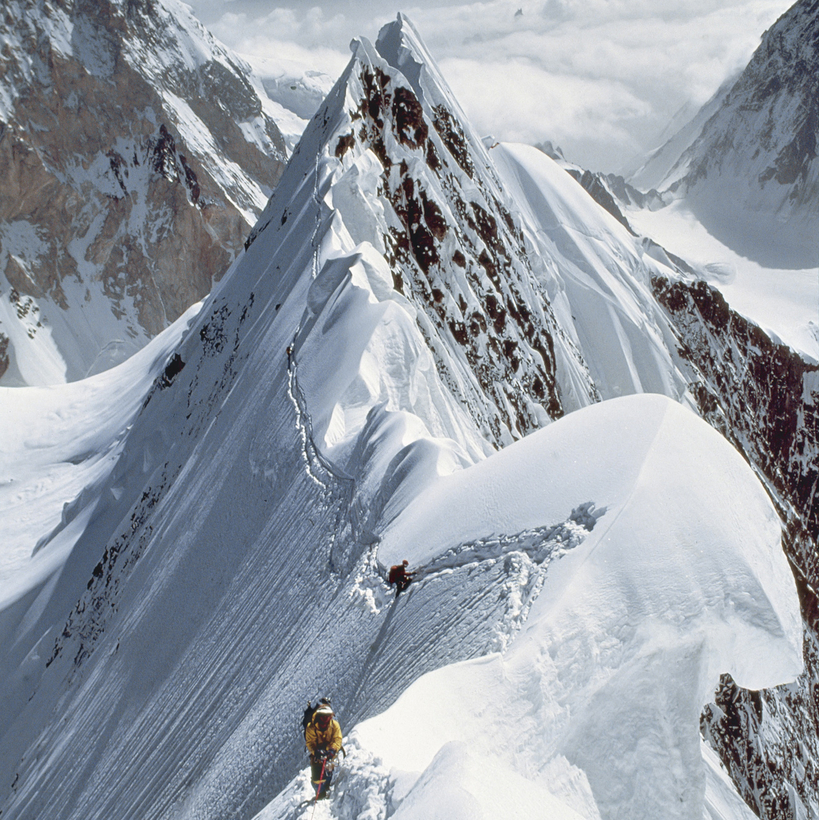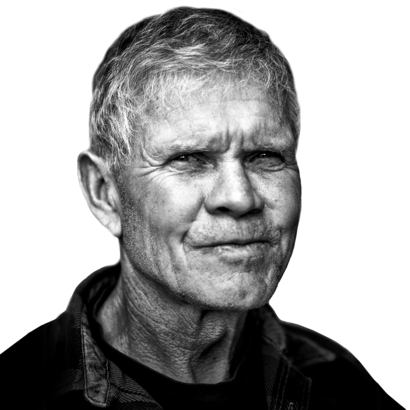In 1980, the People’s Republic of China opened its border to foreign mountaineers, and I was invited to attempt a remote mountain in Eastern Tibet called Minya Konka (“Gongga Shan,” in Chinese). It is nearly 25,000 feet high, and no outsiders had been to the area since the 1930s. The chance to see such an unknown region was reason enough for the adventure, never mind the climb.
One day, descending from our camp at 20,000 feet, three close friends and I triggered an avalanche. We were swept 1,500 vertical feet down the mountain. We all suffered injuries, but Jonathan Wright’s were the gravest. I gave him mouth-to-mouth, but after a half-hour he died in my arms. Stroking his hair, I vowed to be there for his wife and parents, whom I knew, and for his one-year-old daughter as she grew.

We buried Jonathan on the flank of the mountain, next to where he died. He was 28. Back home I went into a spell of introspection about whether to continue mountaineering. Did the rewards outweigh the risks, now so palpably real?
Jonathan and I were also business partners, a writer-photographer team. One of our projects was a story for National Geographic on the newly chartered Everest National Park. Jonathan had already taken some of the photographs. His wife and parents asked if I would return to Nepal to finish the story.
A Model and a Mountaineer Walk into a Bar …
I checked into the Hotel Yak & Yeti in Kathmandu. In the lobby I saw a beautiful woman sitting alone, and my friend Nicholas had the waiter send her a drink. Her name was Jennifer, and she had been on assignment for Calvin Klein, buying silk in Thailand. I was usually shy with women, but I nonetheless blurted out an invitation for her to join my trek to Everest base camp.
“That’s very nice of you, but the farthest I’ve ever walked is from a cab to the front entrance of Bergdorf Goodman.”

Jennifer and I married on Valentine’s Day in 1982 at the Biltmore Hotel in Santa Barbara, and that fall we had our first daughter, Carissa. I realized it wasn’t a coincidence that my life changed so significantly so soon after the avalanche. On the surface we were opposites; below, we both deeply understood the importance of living life in the moment because we understood how at any moment we may not be alive.
Jennifer had been married before, to a Mexican man whose passion was sailing. She told me how he had decided to sail his boat around the world, and how she joined him. They were sailing across the shallow passage between Australia and New Guinea when a major earthquake triggered a tidal wave. It broke the boat apart, and when Jennifer regained consciousness in the hospital, she was told that of the dozen people on board the yacht, only one other had survived, and it was not her husband. She was pregnant at the time, and lost her baby.
After Jonathan’s death, Jennifer encouraged me to return to adventure. She knew I needed to be true to myself. It wasn’t easy, and she was the hero, holding two jobs, one as director of company image at Patagonia, the other raising our three children when I was away.
One year a young woman spent the summer with us. Asia had been a year old when her father, Jonathan, died in my arms. Now she was 20, and I knew she would want to know more about her father’s death.

“Thank you,” she said after I finished telling her the story. “When I was eight, I had this idea that if I could somehow go there, I would be able to figure out who he was. I still want to go. Would you take me to Tibet?” she asked. “To Minya Konka? To climb up the side of the mountain and find my father’s grave?”
I ran the idea past Jennifer. “Of course you’re going,” she said. “Asia isn’t asking you just to find her father. She’s asking you to be her father.”
The trip was arduous. Finally, we found the grave, which had been torn apart, maybe by a snow leopard. We gathered my old friend’s bones, his daughter and I, and rebuilt the grave.
On the trip I shared with Asia the lessons I had taken from high elevations and carried back to sea level, lessons I knew her father would have taught her. Important things, like understanding that the goal isn’t the summit—it’s the footsteps to get there.
Rick Ridgeway’s Life Lived Wild: Adventures at the Edge of the Map is out now from Patagonia


